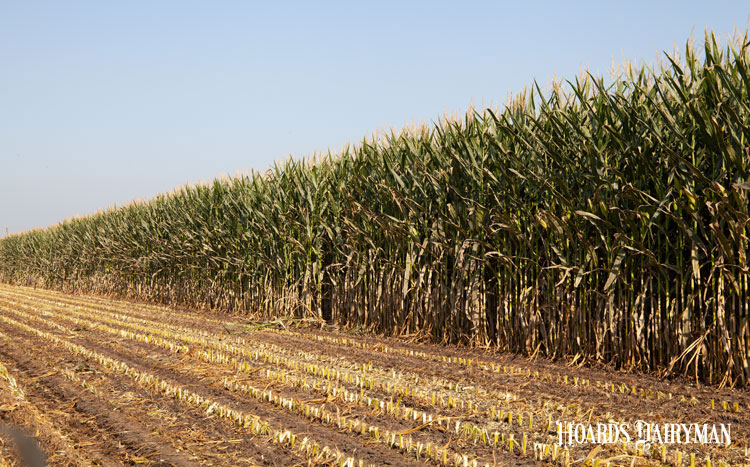
It might not seem like it in the midst of long days of chopping corn, filling bunkers and bags, and keeping the rest of the dairy running at the same time, but the busy corn silage harvest season will eventually wrap up. Then, it’s time for fermentation to do its job and get the crop ready to be fed.
Fermentation serves multiple purposes with silage, among them stabilizing the forage for a healthy feedout and boosting starch digestibility. However, it does not improve starch accessibility, wrote Joe Lawrence and Allison Kerwin in a factsheet from Cornell Pro-Dairy. In a study that evaluated corn silage samples at four farms at four time points from zero to 135 days of fermentation, there was no indication of a consistent effect on starch accessibility when measured by corn silage processing score (CSPS).
In order to make the digestible starch available to the animal, then, the starch much become accessible at harvest, emphasized Lawrence and Kerwin. This is achieved through effective kernel processing, breaking open the seed coat to allow rumen bacteria to break down the starch.
CSPS is the standardized laboratory analysis of kernel breakage, explained Lawrence and Kerwin. The process shakes a sample through a 4.75-millimeter (mm) sieve, and the goal is for at least 50%, and ideally 70%, of the silage starch to pass through the sieve.
Techniques to try
Short of this laboratory analysis, a few in-field methods are available to monitor kernel processing over the course of the harvest. After all, when multiple tons of forages are harvested every hour, even small malfunctions can have a significant impact on the quality of forage put away. Keeping an eye on breakage during the harvest process can ensure your herd will be able to access the valuable starch stored inside the kernels.
- If you or your nutritionist has access to a Penn State Particle Separator, you can imitate the CSPS process because, at 4.06 mm, the lower sieve is slightly smaller than the 4.75 mm used in that analysis.
- Even more simply, you may evaluate breakage by filling a 32-ounce cup with a sample of forage. Originally, the goal was to have less than two whole kernels per cup; now, that standard has improved to zero whole kernels.
- Another option is to fill a bucket with water and add green forage. The stover will float, while the kernels will sink and be easily visualized.
- In conjunction with these methods, the University of Wisconsin’s SilageSnap cellphone app can evaluate kernel size and processing quality.
New forage harvesters are nearly all equipped with kernel processors, and the Cornell pair said adding one onto an older model is well worth the investment. With monitoring and maintenance, they can keep corn silage starch accessible. Modifications to further improve performance and boost breakage could include adjusting the speed differential to be more aggressive, reducing belt slippage by raising the number of ribs on the pulley and belt, or adjusting the spring tension.








